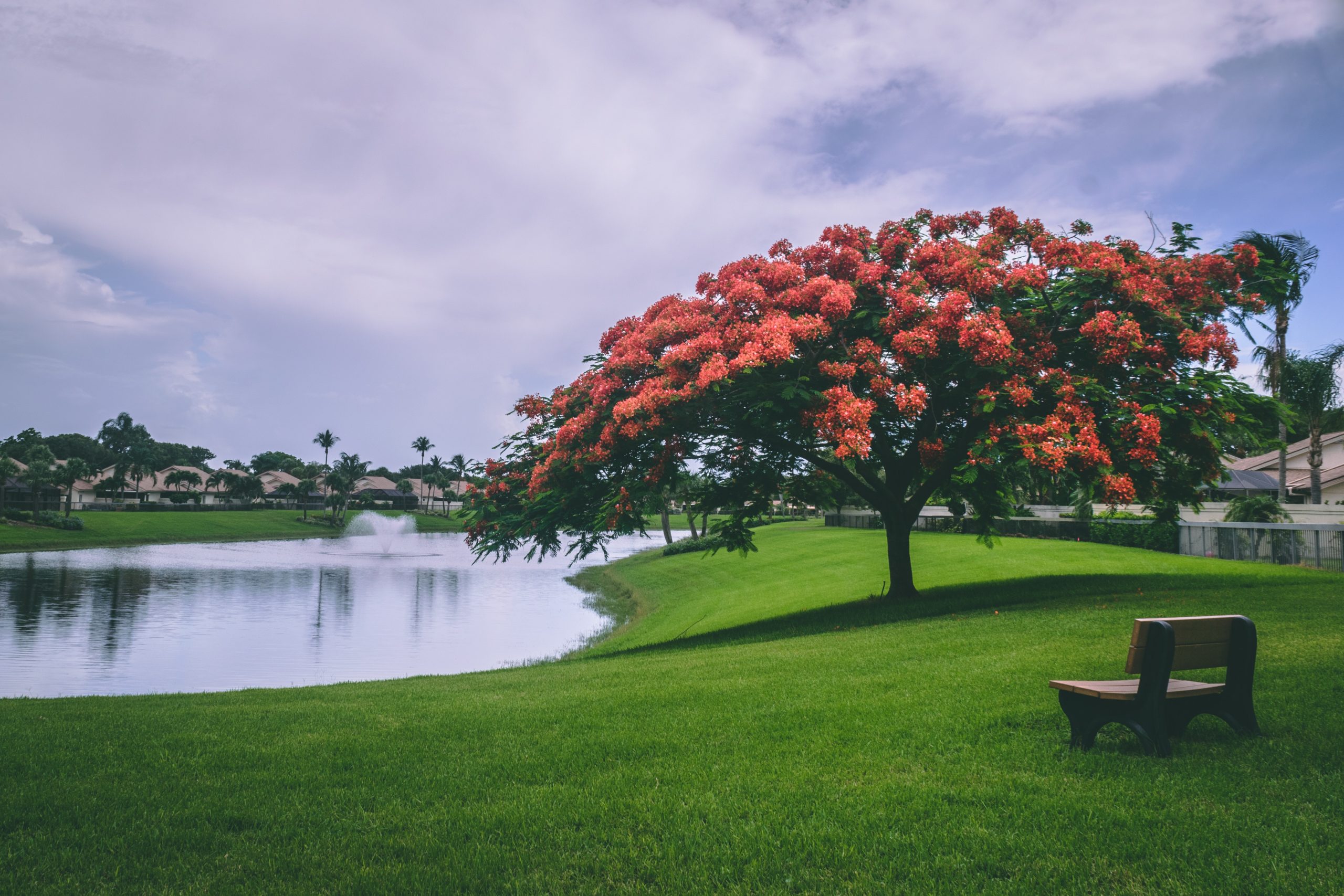The dictionary defines green space as “community space consisting of land (such as parks) rather than buildings.” But, outside of textbook definitions, green space can mean many different things in many contexts and to many different people. A green space can be a place of respite in the midst of a busy string of errands; it can be a charming spot where meet cutes occur; it can be childhood memories of days spent running, playing, laughing.
For those reasons and many more, green spaces are important. Let’s talk about that!
Green Spaces Provide Social, Environmental, and Health Benefits

Yes, green spaces offer them all! In fact, the positive impacts they bring to a community socially, environmentally, and healthfully are so numerous that we’ve got a dedicated post planned for each category.
For now though, here are some insightful factoids to remember:
- More social activities are observed in common spaces that have trees compared to treeless spaces of the same size.
- Older adults who have more exposure to green common spaces report a stronger sense of unity among residents within their neighborhood.
- Social relationships have been shown to affect mental health, health behavior, physical health, and mortality risk.
- Urban vegetation stores carbon, helping to mitigate climate change, and reduces the likelihood of flooding by storing excess rain water.
- Green spaces improve air quality and limit the impact of heatwaves in urban settings.
Added Value is Par for the Course

Did you know that generally, apartment complexes with established green spaces have higher lease rates than those without them? Yep, it’s true! Since green spaces positively impact our lives and livelihood, as well as being just plain pleasant, renters are quicker to spend more when they’re getting access to such areas. The same is true for master-planned communities of houses.
Here is a real-life example of that concept in action: Jerry Pate Design executed the landscape architecture for Southtowne in Pensacola, an upscale apartment community in the middle of the city’s downtown district. We worked hard to design and build beautiful interior courtyards, full of the amenities that make green spaces great—comfortable gathering spaces, shade structures, healthy trees, a good balance of grass and hardscape, etc. By the time they opened, the client already had a wait list a mile long. The streetscape, also created by Jerry Pate Design, was said by several passersby to remind them of San Diego’s iconic Gaslamp Quarter.
It reminds the locals of a place they enjoy, bringing them a feeling of nostalgia, familiarity, and joy. As a result, they feel a sense of peace from the surroundings, and the owners get the satisfaction of knowing they helped their community while witnessing the success of their business model.
Another Point on the Importance of Green Spaces: Walkability Increases

Picture this: A young family lives a mile away from their favorite grocer. It’s a sunny, breezy Saturday, and the little ones are restless. So, mom and dad decide they’ll take a nice stroll to do their shopping.
The wide sidewalks, lush trees, benches, and small parks played a role in their decision. That’s because those features and green spaces make them feel safe while guaranteeing they’ll have a spot to stop if they need to, whether because children are screaming or to get a better hold on the grocery bags.
Incorporate green spaces into public areas with those connections in mind. You’ll inspire communities to set out on foot! And the benefits of that are manifold. Not only does walkability result in more physically healthy, active and agile people. It also reduces carbon emissions and gas use, and encourages social interactions, thus supporting the emotional and mental well-being of all involved.
We hope you enjoyed exploring the importance of green spaces with us! If you’re interested in learning more specifics on their social, environmental, and health benefits, be sure to stay tuned! Three more blog posts in this series are on the way!
To learn more about how Jerry Pate Design could help you create green spaces, check out our services.

